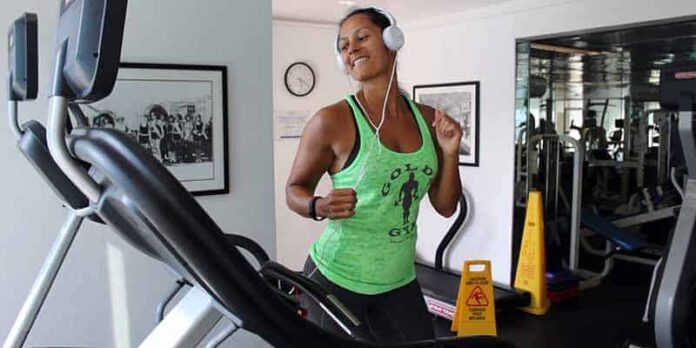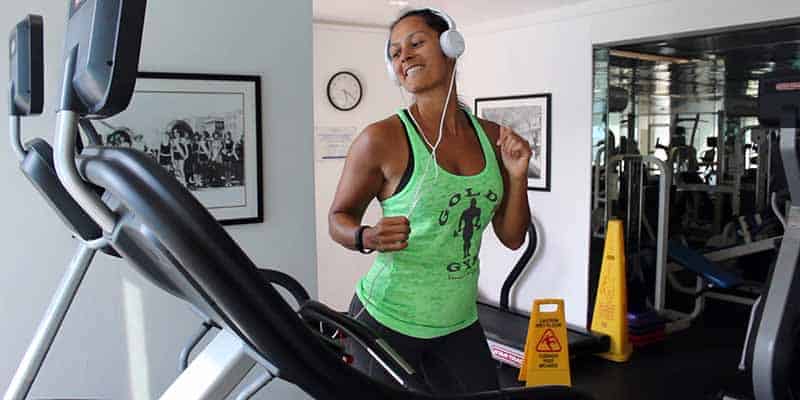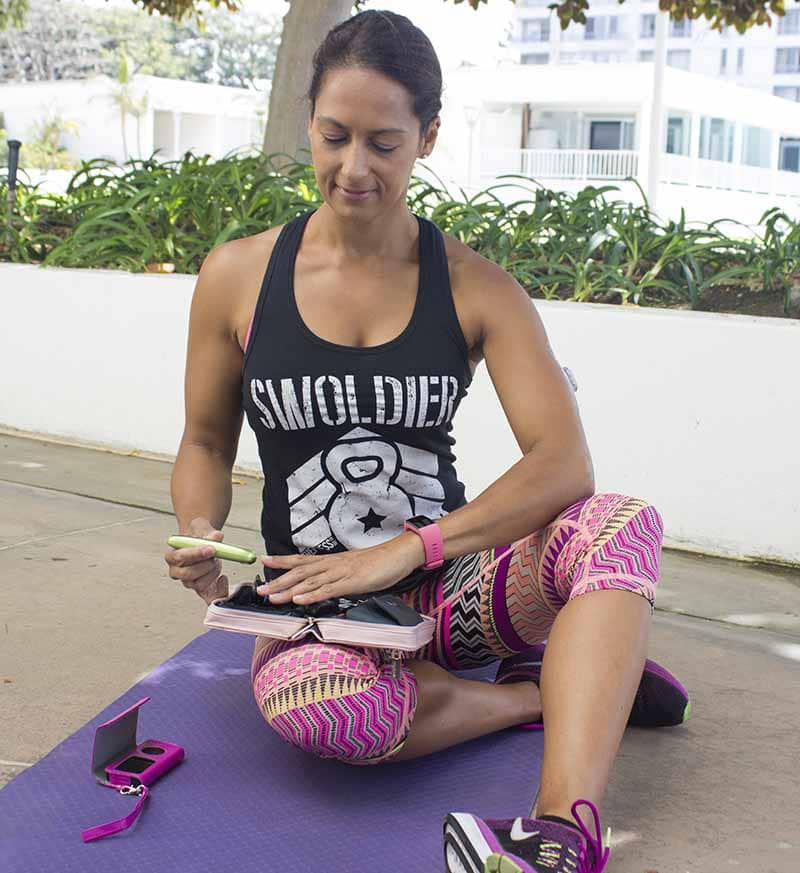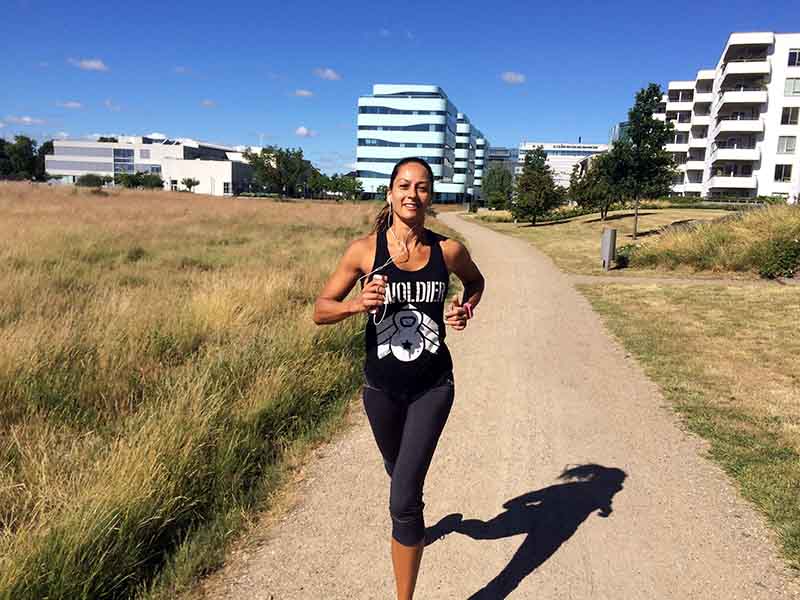Like most people with diabetes, I tend to have a love/hate relationship with cardio. I love all the positive things that cardio does for my body and diabetes management, but I hate how hard it can be to keep my blood sugars under control while working out.
At least I used to hate it before I found a formula for insulin and food around workouts that works for me (most of the time).
In this post, I’ll describe how you can find your own formula for success when it comes to cardio.
Why do cardio at all if it’s so hard?
Regular cardio workouts have so many benefits that they should always be included in your weekly workout schedule, regardless of your goals.
Cardio can help with weight management, improves insulin sensitivity, help you relax and sleep better, and improves your cardiac health. All great things!
The general guidelines state that healthy adults should engage in at least 150 minutes of exercise per week. That’s only 20 minutes of movement per day. It doesn’t have to be full-out “I think I’m going to die” cardio either. Just getting your heart rate elevated for this period of time is enough to reap most of the benefits.
Take me, for example – some of my favorite types of cardio are dancing, hiking, circuit training, walking the dog, and boxing. I recently gave spinning a try, and though I really wanted to love it, after 7 spinning classes I just had to admit that I didn’t enjoy it at all. So I won’t be doing that again anytime soon.
What I’m trying to say is that cardio can be challenging and fun at the same time, and you should choose a type of cardio that you enjoy!
Taming your blood sugars during and after cardio
When somebody with a functioning pancreas starts a cardio session, his or her body will reduce the amount of insulin released. The body is smart like that. However, those of us who take insulin have to be smart on behalf of our bodies and adjust our insulin when doing cardio.
What happens when you start a steady-state cardio session (meaning you’re not doing intervals but keeping your heart rate elevated and fairly stable) is that your insulin sensitivity increases. In other words, your body gets more efficient at using the insulin you’ve injected (can we all just agree that your body becoming more efficient is a good thing, please?).
This improved efficiency is why you will most likely need less insulin when adding cardio workouts to your weekly routine.
Yes, I said you’ll need less insulin!
This is one of the most important things that I teach all my diabetes coaching clients. If you are consistently experiencing lows during cardio (or in general), it’s generally better to reduce your insulin rather than increase your intake of carbs. This can mean a reduction in your bolus amounts, your basal amounts, or both.
If you try to fight lows by preemptively eating carbs, you are just “feeding the insulin”, which can be counterproductive, is more difficult to get right, and can make weight management much harder.
How much to adjust your insulin
The question then is when and how much to adjust your insulin. You don’t want to reduce it too much and have your blood sugars running high either.
Unfortunately, there is no easy formula that fits everyone, but if you track what you are doing and analyze your data, you can find your own formula for successful cardio and diabetes management. You can use my free Blood Glucose tracker (PDF or Excel) or make your own.
Note: While there isn’t a formula that fits all, there are some general guidelines that I highly recommend you take note of!
The three golden rules for gathering data:
- Reduce the number of variables – do the same exercise routine the first week or so. If you can also keep your active insulin on board when exercising the same, even better, but it’s not a requirement
- Measure, measure, measure – as a minimum you will have to measure your blood sugar before your workout, right after, and 60-90 minutes after
- Accept missteps – it’s most likely that you won’t get it right every time, and that’s OK. Keep glucose tabs around and learn from your mistakes
How to find your diabetes management formula
Let’s get to it. If you follow the three golden rules above, you should be able to start putting your formula together after as little as 2-3 cardio sessions.
What I want you to do is pretty simple. I want you to track your blood sugars religiously, following the same format as I have in my BG tracker. I’ve added an example in the tracker so that you can see what that would look like, and I’ll use that example here.
(I know it’s hard to read clearly here, but you can see a larger version if you click the image or download the tracker)
This example assumes I worked out Monday and Wednesday, doing cardio for 40 minutes in the evening on both days.
In this example, my assessment would be that I managed to get my insulin right on Monday, but that I had too much insulin in my system for the Wednesday session (I went low and had to drink juice).
The only reason why my blood sugar was acceptable 60 minutes after the workout Wednesday was due to the extra carbs I had during my workout, and that isn’t optimal management. I had to have that juice not because I was thirsty or craving juice, but because I needed to feed the insulin in my system, of which there was too much. That indicates that something has to change.
This is only two data points, but based on this, I would try to have less than 0.5 IU active insulin on board when starting a cardio session like the ones I did that week.
Note that the low blood sugar during the Wednesday workout could also be due to already declining sugars due to overdosing at dinner. That would be something I would have to test out as I continued to do more workouts.
What I did here was record my findings, make an initial analysis, and form a few hypotheses based on my findings (e.g. of a hypothesis is to not have more than 0.5 IU active insulin on board).
If you’re self-managed like me, you can then start making adjustments and test out your hypothesis. If you rely on your medical team for adjustments, this will be golden information to bring to them so you can make the changes together.
There are generally 3 things your hypothesis could be centered around when it comes to making insulin adjustments for cardio:
- mealtime bolus adjustments
- amount of active insulin on board during the workout
- basal adjustments
Please always be cautious when making changes to your diabetes management. If you feel that you need more data points before making any hypotheses or tweaks to your insulin doses (if this is new to you, I would definitely recommend a minimum of five data points), please do so.
If you don’t make insulin adjustments on your own but with your medical team, please bring them your data and continue to work with them.
No matter what, this is a process that takes time. You will have successes and missteps, but after a while, you will start to have a very good idea of how to adjust your insulin to get through a cardio workout safely and effectively!
Suggested next posts:
If you found this guide to finding your formula for exercising with diabetes useful, please sign up for our newsletter (and get a free chapter from the Fit With Diabetes eBook) using the form below. We send out a weekly newsletter with the latest posts and recipes from Diabetes Strong.




